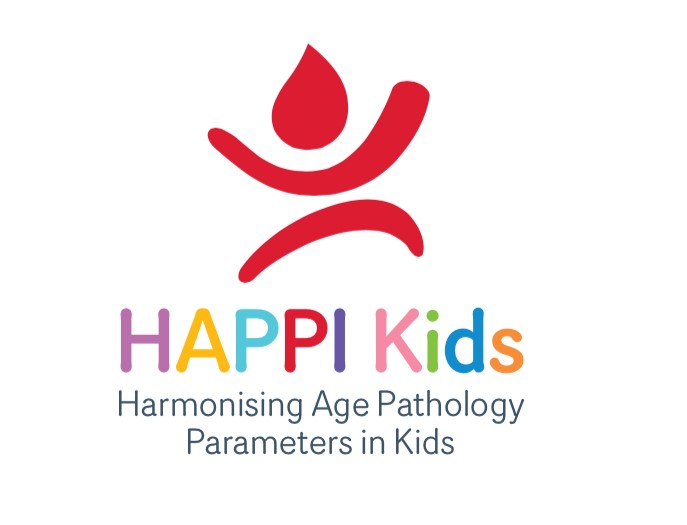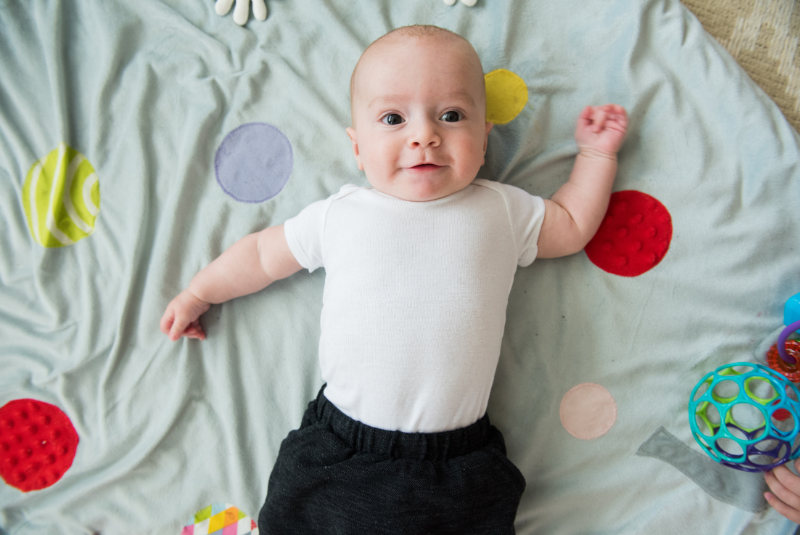Harmonizing Age Pathology Parameters in (HAPPI) Kids Study
- Project status: Active
Research area: Clinical Sciences > Haematology

HAPPI Kids Study
Proper medical assessment and care of children is vitally dependant on both the availability of accurate laboratory tests and reliable reference intervals to help guide the interpretation of test results.
Proper medical assessment and care of children is vitally dependant on both the availability of accurate laboratory tests and reliable reference intervals to help guide the interpretation of test results.
Overview
Study aims
We are aiming to collect blood samples from around 5,000 children between birth and 18 years, so we can establish normative data for age appropriate reference intervals in haematology, immunology, and biochemistry for the paediatric population for RCH and for laboratories throughout the state of Victoria.
 Study background
Study background
Age-specific reference ranges are essential for correct interpretation of laboratory tests. Only with accurate and relevant age-appropriate reference ranges can any test result be correctly assigned as being normal or abnormal. Reference ranges are expressed as the mean and boundary encompassing 95% (between the 2.5th and 97.5th percentiles) of the normal population.
For all laboratory tests, reference ranges need to be established under identical conditions that a clinical test is to be performed (same reagents, same analysers and the same assay techniques). Frequently, age-appropriate reference ranges are not available and the clinical laboratory relies on reference ranges established from different populations, using different assay techniques, different reagents and analysers.
Proper medical assessment and care of children vitally depend on both the availability of accurate laboratory tests and reliable reference intervals to help guide the interpretation of test results. Using adult normative data or non-validated paediatric data is known to lead to misdiagnosis of children.
By using these reference ranges, the clinical laboratory risks incorrect interpretation of test results that can directly result in misdiagnosis in the community. Despite the obvious need, paediatric-specific reference intervals remain inadequate or unavailable for many analytes.
Information for participants
Who can take part?
Neonatal and paediatric trained pathology collectors will collect the blood samples after obtaining informed consent from the family.
- We are looking for healthy children aged 28 days to 18 years old, attending hospital for minor elective surgery requiring a general anaesthetic
- We are also looking for healthy term babies with a gestational age of 36-42 weeks.
- We are also looking for healthy premature babies with a gestational age greater than 28 weeks
Where is the HAPPI Kids study taking place?
The HAPPI Kids study will recruit patients across five sites:
- The Royal Children’s Hospital
- The Royal Women's Hospital
- Northern Health together with Healthscope Pathology
- Sunshine Hospital, Western Health together with Dorevitch Pathology
- Cabrini Hospital together with Melbourne Pathology
Research team
Principle Investigator
Professor Paul Monagle
Study Coordinator
Ms Vicky Karlaftis
Associate Investigators
- A/Prof Vera Ignjatovic – Murdoch Children's Research Institute
- Ms Janet Burgess – The Royal Children’s Hospital
- Ms Jenny Ryan – The Royal Women’s Hospital
- A/Prof Christine Rodda – Sunshine Hospital, Western Health
- Dr Martin Wright – Sunshine Hospital, Western Health
- Dr Simon Hauser – Northern Health
- A/Prof Wei Qi Fan – Northern Health
- A/Prof Peter Lowthian – Cabrini Hospital
Collaborators
Our partners
- The Royal Children's Hospital
- The Royal Women's Hospital, Victoria
- Northern Health
- Western Health
- Healthscope Pathology
- Dorevitch Pathology
- Cabrini
- Melbourne Pathology

Funding
The HAPPI Kids Study is being fully funded by The Royal Children’s Hospital Foundation.
Contact us
HAPPI Kids
Murdoch Children's Research Institute
The Royal Children's Hospital
50 Flemington Road
Parkville VIC 3052
Australia














